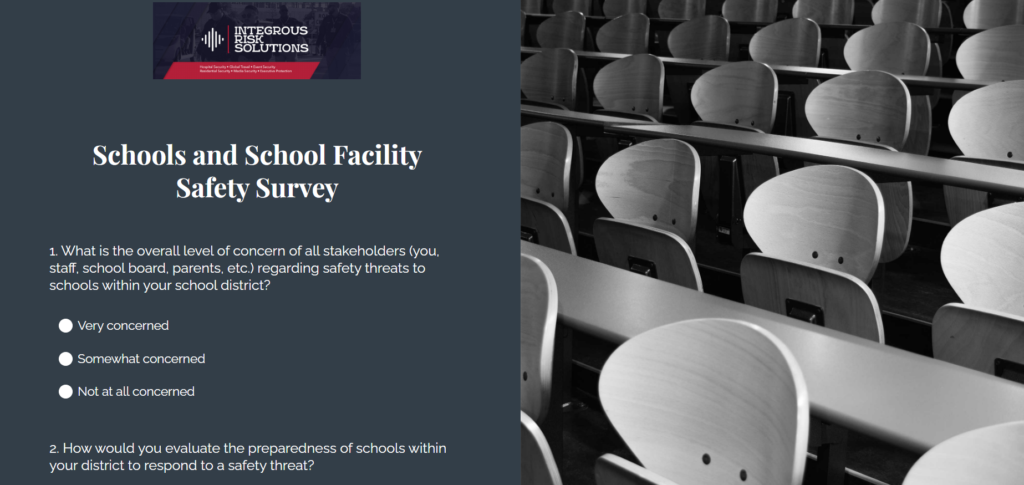Consider the following selected findings which were published by the U.S. Department of Education’s National Center for Education Statistics in a report titled Crime, Violence, Discipline, and Safety in U.S. Public Schools in 2019-20: Findings From the School Survey on Crime. The survey was a national sample of 4,800 U.S. public schools. Note that this list only references those findings related to school violence or the prevention of school violence. A complete list of all findings, including references for these statistics, are provided in the full report which can be found at Crime, Violence, Discipline, and Safety in U.S. Public Schools in 2019–20 (ed.gov).
- During the 2019–20 school year, about 939,000 violent incidents and 487,000 nonviolent incidents occurred in U.S. public schools. Seventy percent of schools reported having at least one violent incident, and 62 percent reported having at least one nonviolent incident.
- Sixty percent of schools reported at least one physical attack or fight without a weapon at school. Nine percent of schools reported such an attack with a weapon.
- Bullying at school at least once a week was reported at a higher rate for middle schools (25 percent) than for high/secondary schools (16 percent) or elementary schools (11 percent). Cyberbullying at school or away from school at least once a week was reported by 33 percent of middle schools and 29 percent of high/secondary schools. This compared to 7 percent of elementary schools.
- Sixty-four percent of all public schools reported having a threat assessment team. These teams were more common in suburban (71 percent) and city (67 percent) schools than in town (57 percent) and rural schools (55 percent) (table 7).
- During the 2019–20 school year, 52 percent of schools had a written plan for procedures in the event of a pandemic disease. Schools had other types of plans as well. Some of the most commonly reported plans were for natural disasters (96 percent), active shooters (96 percent), and bomb threats or incidents (93 percent).
- Schools were asked whether certain factors limited their efforts to reduce or prevent crime “in a major way.” The two factors reported most often were inadequate funding and a lack of, or inadequate, alternative placements or programs for disruptive students. Roughly 36 percent reported each issue.
- About 51 percent of traditional public schools had a School Resource Officer present at school at least once a week. This was about twice the rate (25 percent) of charter schools.
- Among schools with 1,000 or more students, 83 percent had at least one sworn law enforcement officer who routinely carried a firearm. Schools with fewer students reported this situation at lower rates (33 to 56 percent).
While these statistics provide some optimism surrounding increased awareness and tracking of violent or potentially violent situations in school settings, what the study fails to address are the fundamental questions related to 1) how well (or poorly) the physical structures of the schools themselves are hardened to a level to deter violent attacks; and, 2) what policies and protocols are in place to ensure an quick and appropriate response to violent attacks. This is not surprising since, at their core, a school’s primary responsibility is to provide our children with quality education and not to be security experts.
The first step in the process of increasing the level of safety for students and the adults responsible for them in our schools must include the completion of a comprehensive security site assessment. This assessment should include an examination of the safety, accessibility, and emergency preparedness of buildings and grounds with particular attention to building access ingress and egress, exterior visibility, building footprint and structural integrity, and existing site security measures. Only by understanding existing strengths and vulnerabilities can specific actions to improve site security be made.
The development of a security/safety plan follows the site assessment. This plan should specifically and clearly define actions to be taken in response to any number of potential threat or hazards – hurricanes, severe storms, earthquakes, tornadoes, hazardous materials incidents, mass casualty incidents, active assailant, disease outbreak, and any others. Most importantly, this plan must be specific to the school or schools within a school district and not a “cookie cutter” plan that provides only general guidelines. Moreover, the contents of this plan must be known and understood by everyone responsible for its successful implementation. This includes students, teachers, administrators, parents, local first responders, etc. Without this collaboration and knowledge, the plan serves no worthwhile purpose.
It is a challenge to balance an inviting atmosphere with the safety and security of those in it, that’s why Integrous Risk Solutions is here to help both public and private organizations. Integrous Risk Solutions offers comprehensive risk mitigation and security consulting services, that includes the ability to partner with school districts in meeting their specific security needs. With backgrounds from elite careers in federal and local law enforcement, military special forces, private security, and various intelligence agencies, Integrous Risk Solutions has the knowledge and resources to be your trusted security partner.
If you are a public or private school or school district administrator interested in learning more about increasing safety in your school district, Integrous Risk Solutions has developed a brief survey (under 5 minutes), accessible at the following link, that you can use to begin the assessment process.




